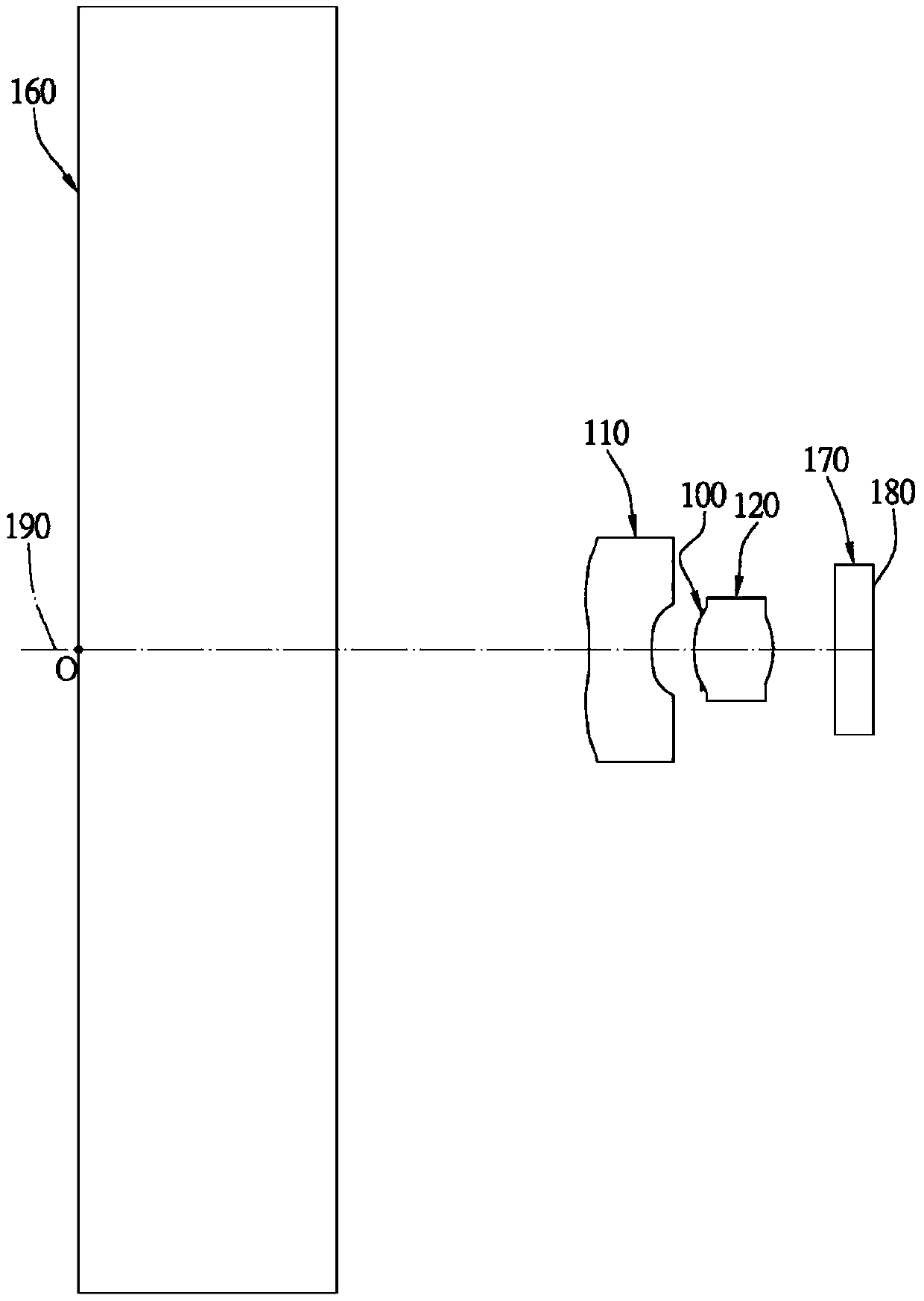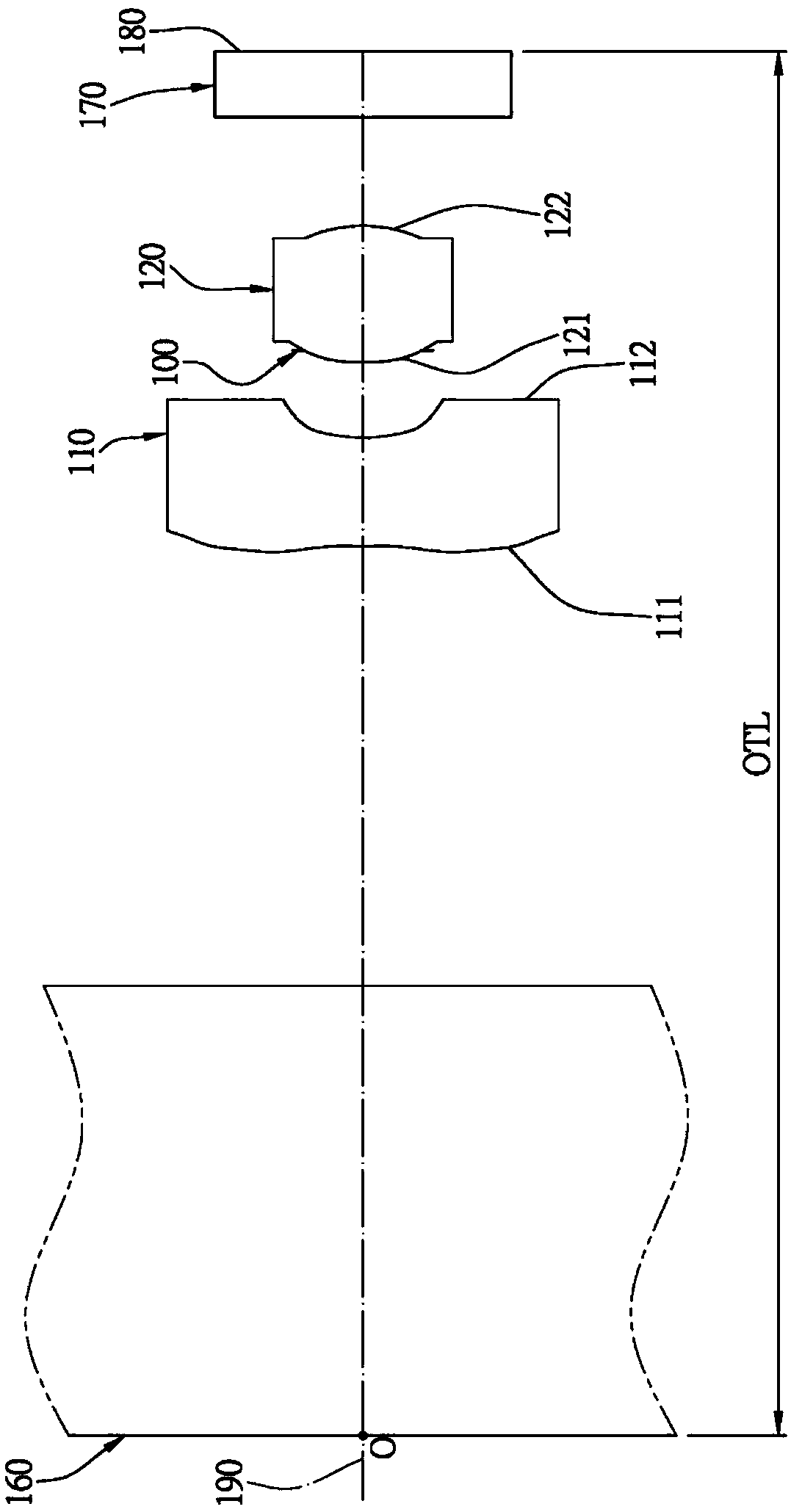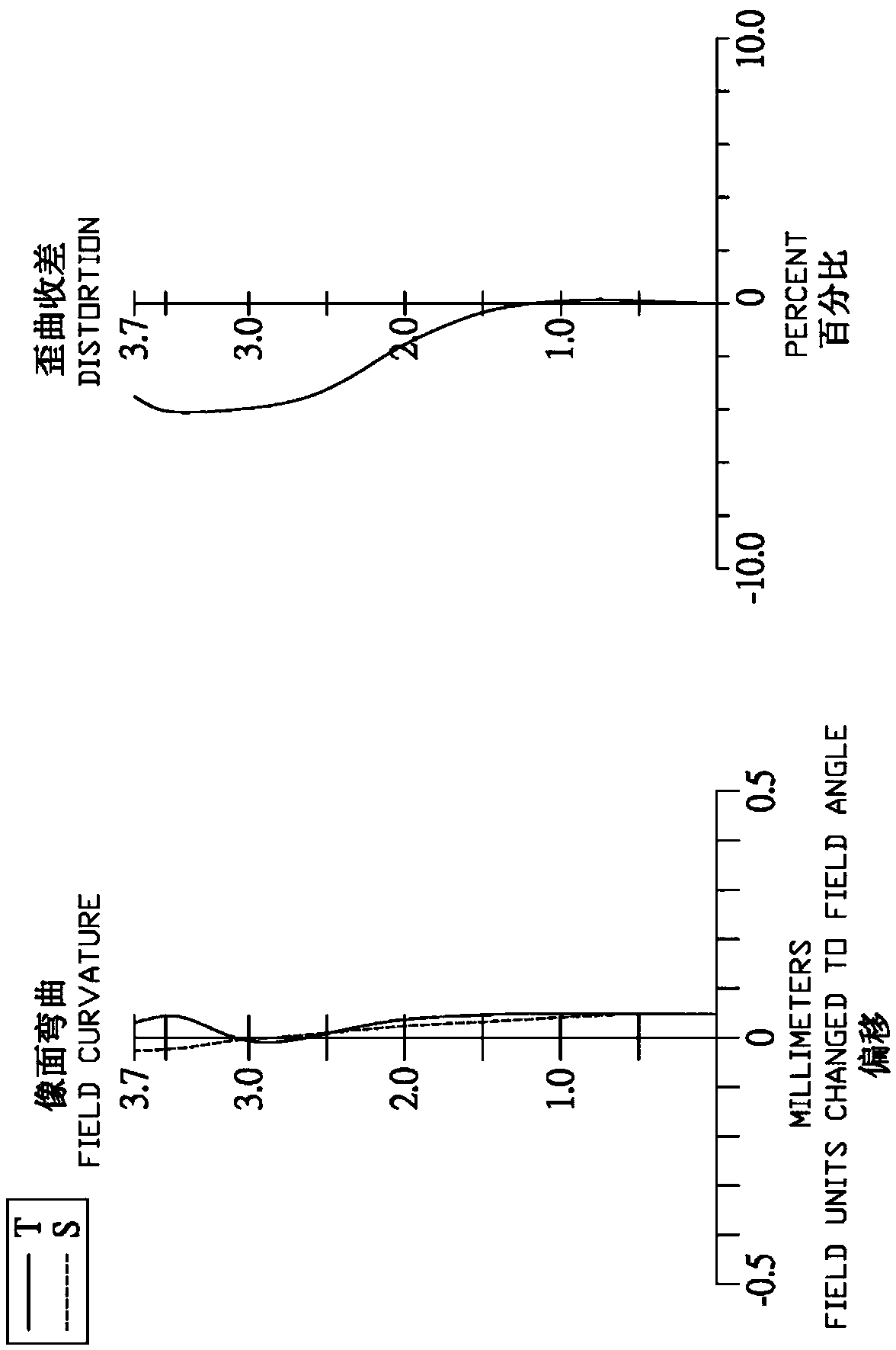Thin imaging lens group
A lens group and imaging technology, applied in the field of lens groups, can solve the problems of high product unit price, high manufacturing cost, and difficulty in miniaturization
- Summary
- Abstract
- Description
- Claims
- Application Information
AI Technical Summary
Problems solved by technology
Method used
Image
Examples
no. 1 example
[0069] Please refer to Figure 1A , Figure 1B and Figure 1C ,in Figure 1A A schematic diagram showing a thin imaging lens group according to the first embodiment of the present invention, Figure 1B for Figure 1A A partial enlargement of the . Figure 1C From left to right are the field curvature and distortion aberration curves of the thin imaging lens set of the first embodiment. Depend on Figure 1A and Figure 1B It can be seen that the thin imaging lens group includes a flat plate element 160, a first lens 110, an aperture 100, a second lens 120, an infrared filter 170, and an imaging surface 180 in order from the object side to the image side, wherein the thin imaging lens There are two lenses (110, 120) with refractive power in the group. The aperture 100 is disposed between the first lens 110 and the second lens 120 .
[0070] The plate element 160 is made of glass, and is disposed between an object O and the first lens 110 without affecting the focal length o...
no. 2 example
[0099] Please refer to Figure 2A , Figure 2B and Figure 2C ,in Figure 2A A schematic diagram showing a thin imaging lens group according to the second embodiment of the present invention, Figure 2B for Figure 2A A partial enlargement of the . Figure 2C From left to right are the field curvature and distortion aberration curves of the thin imaging lens set of the second embodiment. Depend on Figure 2A and Figure 2B It can be seen that the thin imaging lens group includes a flat plate element 260, a first lens 210, an aperture 200, a second lens 220, an infrared filter 270, and an imaging surface 280 in order from the object side to the image side, wherein the thin imaging lens There are two lenses (210, 220) with refractive power in the group. The aperture 200 is disposed between the first lens 210 and the second lens 220 .
[0100] The plate element 260 is made of glass, and is disposed between an object O and the first lens 210 without affecting the focal le...
no. 3 example
[0112] Please refer to Figure 3A , Figure 3B and Figure 3C ,in Figure 3A A schematic diagram showing a thin imaging lens group according to a third embodiment of the present invention, Figure 3B for Figure 3A A partial enlargement of the . Figure 3C From left to right are the field curvature and distortion aberration curves of the thin imaging lens set of the third embodiment. Depend on Figure 3A and Figure 3B It can be seen that the thin imaging lens group includes a flat plate element 360, a first lens 310, an aperture 300, a second lens 320, an infrared filter 370, and an imaging surface 380 in order from the object side to the image side, wherein the thin imaging lens There are two lenses (310, 320) with refractive power in the group. The aperture 300 is disposed between the first lens 310 and the second lens 320 .
[0113] The plate element 360 is made of glass, and is disposed between an object O and the first lens 310 without affecting the focal length...
PUM
 Login to View More
Login to View More Abstract
Description
Claims
Application Information
 Login to View More
Login to View More - R&D
- Intellectual Property
- Life Sciences
- Materials
- Tech Scout
- Unparalleled Data Quality
- Higher Quality Content
- 60% Fewer Hallucinations
Browse by: Latest US Patents, China's latest patents, Technical Efficacy Thesaurus, Application Domain, Technology Topic, Popular Technical Reports.
© 2025 PatSnap. All rights reserved.Legal|Privacy policy|Modern Slavery Act Transparency Statement|Sitemap|About US| Contact US: help@patsnap.com



